Life in Ireland during the 1800s: See more by looking through this lens
I have noticed that when we assemble an Irish family tree by gathering the essential ancestors, places and dates - we eventually ask:
“I wonder what life was like for my Irish ancestor and their family when they lived in Ireland?"
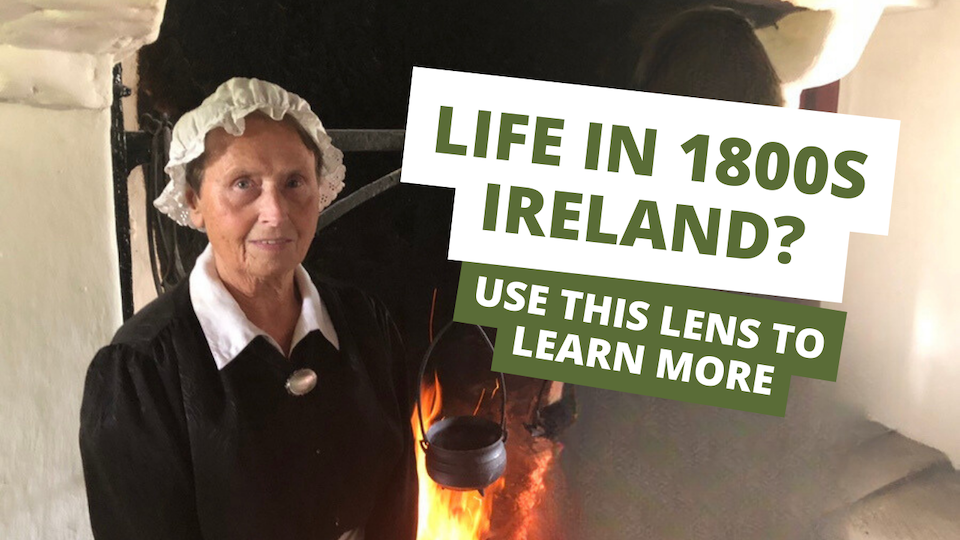
I wonder what life in Ireland was like for my Irish ancestor and their family?
That’s the topic we will cover in today’s letter – life in Ireland in the 1800s. Of course, it’s a big topic, so I will use a very particular lens to look at our ancestors life at that time. I will examine the various types of occupations they held and comment on the broader work and social environment too.
Where to Start? Let’s Look at Occupations in the Irish Census.
Let’s dip into the 1901 Irish census and look at various occupations held across the island of Ireland. As I share some key numbers with you, I will also comment on some wider “life in Ireland” topics.
Why use the 1901 Irish census? Because it is the earliest intact Irish census available both online and for free. The information held in the census database provides us with a useful snapshot of who lived where, who lived with them, their occupations, religion and more. If you think: “well, my ancestor left Ireland before 1901 so it does not apply to me, then you would be wrong. Much of the information we find in the 1901 census reflects how our ancestors lived and worked right through the 1800s.
If you want to replicate the findings I share with you, here is how to access the 1901 Irish census and search for yourself:
- Go to the 1901 Irish census online here: https://census.nationalarchives.ie/
- Click on the “Search census” option at the top of your screen.
- Next, on the “Search screen” – set “census year” to “1901”. Then click on the “More search options” text – this will open up more search options!
- In the occupation window – type in an occupation — you can use wildcards e.g. typing Shoe* into the occupation window will return all occupations listed with shoe somewhere in the title.
- Finally – click on the grey “Search” button to see what comes up for you.
- When I enter “Shoe*” and click the “Search” button, 9,626 entries are returned. Next, click on the “Show all information” box at the top right of your screen. This will show you extra information such as the occupation (including lots of misspellings in the return).
Got it? That’s the end of the technical lesson – do use this wonderful free resource in your own time. Now, let’s have a look at life in Ireland in the 1800s.
Life in Ireland in the 1800s.
First, let’s get our bearings. Using the 1901 census I can see that the total reported population on the island of Ireland for the 1901 census was 4,429,782 persons.
However, I also know that the reported population for 1841 – 60 years earlier – was 8.2 million on the entire island. Almost double in size! So, what happened to the population between 1841 and 1901?
You may already know the answer to that question. The Great Famine of the mid 1840s directly caused the deaths of about 1 million Irish people through starvation and sickness and the emigration of a further 1 million during the late 1840s.
However, it doesn’t stop there. Over following decades, “chain migration” took hold in many parts of Ireland. Immigrants who successfully established themselves in the USA, Canada, Australia, UK and many other locations wrote home with encouragement and money to help their family and friends to join them in their new home. In many counties of Ireland (especially to the west), the population continued to decline all the way into the 1950s.
Up to the 1840s, most “farmers” in Ireland had large families but few tenancy rights. They were effectively subsistence farmers. When the famine came along, many landlords took the opportunity to clear their estates of unproductive farmers and actively encouraged emigration.
Not all rural dwellers moved to a new country. Many headed towards the growing Irish cities and towns of the times – places like Dublin, Belfast, Limerick and Cork had to deal with an influx of poor internal immigrants.
In summary, the period from the 1840s to 1901 saw both a decline in population and a huge shift from rural Ireland to the cities of the United Kingdom and much further afield. The majority of the Irish diaspora that we know today was established during this time.
So, what do we know about life in Ireland in rural areas at the time? Let’s return to the census records.
Farming Life in Ireland.
Let’s examine the 1901 census – where people report as being “farmers” or farm-dwellers. Here are some relevant numbers:
- Farmers and people who lived/worked on a farm: 1,020,205 persons
- Servant: 239,200
- Housekeeper: 181,612
- Spinner/Weaver: 10,722/32,328
- Gentleman/Woman: Approx 1,500
Taking these census records, we can see that there were still a large number of rural dwellers in the country by 1901. There are a few points worth noting.
The majority of “farmers” were in fact “tenant farmers” – they still paid rent to a landlord class, many of whom lived abroad in England and Scotland. Many of the “Gentleman/Women” listed above lived in large houses across the country and derived an income from the leasing of their land to the tenants.
I also see a large number of “servants” listed in the census. Although these servants were located across the towns and cities of Ireland, many were found on farms. “Servants” were often nieces and nephews who were loaned out to help – a form of casual fostering – and often came from a household where there were too many children. As they grew older and left school they may have been assigned to a house/farm that could house and feed them in exchange for work.
We also see “Housekeeper” – a label that was often applied to women and girls beyond school-going age – but always an essential role to keep a household running in an age of manual labour.
I also included the examples of “spinner” and “weaver”. These were mostly spinners and weavers of wool by 1901. Although cottage industries had declined across the island with increasing mechanisation in other markets, it is interesting to see just how many people – mostly women – were still engaged in spinning and weaving into the early 1900s. They were mostly located on farms – often in Ulster.
Education and Religion – Schools and Churches.
- Scholar/Pupil: 847,451 persons
- Teacher: 21,253
- Priest/Church worker: 2,389/1,130
By the late 1800s, the “National School” system in Ireland offered a free education to all children up until about the age of 12. The results of this free education changed life in Ireland and this becomes apparent by the 1901 census return where we find that most people born after the 1860s have the ability to read and write.
“National School” houses were dotted across the island – most in relatively rural locations. If you drive around Ireland today, you will often find them either converted to dwellings or still in use as part of a modern school. The teacher was often from a different location and usually assigned to a two teacher school.
By the early 1800s, the penal laws were relaxing – allowing open worship for Roman Catholics and the construction of churches. Through the 1800s, earlier RC wooden structures were replaced with finely decorated stone churches – many of which were financed by Irish immigrants outside Ireland. Travel to many towns in Ireland today and you will see a Roman Catholic Church (sometimes on the outskirts of town or some distance out) as well as a Church of Ireland, Methodist and Presbyterian chapels.
Law and Order – Constabulary and Soldiers.
- Soldier: 2,292 persons
- Police (Royal Irish Constabulary): 4,671
- Magistrate/Judge: 551
- Lawyer/Law Clerk: 2,437
- Prison Warden: 386
I think that it’s fair to say that in comparison with today, life in Ireland of the 1800s had more emphasis on law and order.
Monetary fines (and jail stretches) were often handed out from the “Petty session” courts for acts like drunkenness, fraud, petty theft, lack of the correct licenses and similar. Most of our ancestors would have more than a passing familiarity with this system.
Constabulary houses and court houses were located in many of our market towns. Officers of the “Royal Irish Constabulary” were typically assigned from a different county – and were as likely to be Roman Catholic as Protestant. As the early 1900s progressed, it became trickier for these RIC officers to show loyalty to both their neighbours and state.
There were also many military barrack towns located across Ireland – usually housing a specific branch of infantry. Many of these Irish soldiers would have been stationed abroad and rotated back to Ireland every few months. The populations of these barracks increased when the locals were in rebellious mood. Much of the commerce in these barrack towns serviced the needs of the local soldiers – and they, in turn, recruited from the people of the town and hinterland. If your family lived close to a barrack town, it was likely that one or more of your sons served in the British army during the 1800s. Many people are surprised to find that over 200,000 men from the island of Ireland served in the British army through World War 1.
Dawn of the Office Worker and the Welfare State: Clerks and Pensioners.
- Clerk: 29,657
- Pensioner: Approx. 10,000
I included these to show that life in Ireland included a growing class of “office worker” (clerk) by the late 1800s and into 1901. I think this occupation may also reflects the establishment of the National School system and the increasing number of individuals who were comfortable with “the pen”.
Also, the idea of “pensioner” was quite a new one. Most of those listed in the census were pensioned soldiers, constabulary and government workers. A widely available pension system had yet to be introduced and was in place by the time of the 1911 census.
Some Other Occupations.
- Seamstress/Milliner: 44,270/3,927 persons
- Shopkeeper: 31,684
- Millworker: 16,109
- Railway worker: 13,593
- Car driver: 5,879
- Nurse/Doctor: 12,233/544
Seamstress was the most numerous occupation listed for women at the time. Most shopkeepers (often also women) and publicans, usually occupied very small (often part time) businesses located in villages and towns. They often appear in the “petty session” records as victims of minor crimes such as fraud.
Compared with most rapidly industrialising countries – Ireland’s population of millworkers was quite low and mostly concentrated around Belfast. The railways had become ubiquitous around the island by the 1880s – the preferred and safest means of transport for medium and long distances.
Car drivers – not automobiles – were horse-pulled hackneys. It would be the 1950s before the motor car started to appear across Ireland in any meaningful way.
Nurses and doctors were often located in what we call “workhouses” and charitable hospitals. Workhouses were set up as the last refuge of the poor in the early 1800s – offering food and basic labour to those without means. However, by the late 1800s they had become de-facto hospitals and hospices. Many workhouses were subsumed into the local hospital system we have in Ireland today.
In Summary – Browse the Census records for yourself.
There are many other occupations such as the above included in the 1901 census – available to browse through at your leisure. I find that examining the records from this census allows us to develop an appreciation of how people lived their lives in Ireland through the 1800s. Not only by looking at the typical occupations – but also religion, levels of literacy, use of the Irish language and typical types of illnesses. You can also examine which surnames were prevalent in which counties.
How about you? Do you know what occupation your own Irish ancestors had before they emigrated? Do let me know.
I often find that certain occupations run in families e.g. masons, carpenters, shop-keepers etc. – and these preference often continue for both those who emigrated and those who remained in Ireland.
That’s it for this week, as always if you’re a Plus member do feel free to share your stories, comments and Irish surnames in your family below.
Slán for this week, Mike.

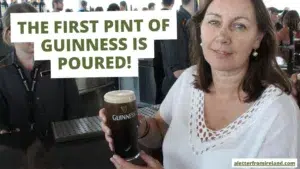
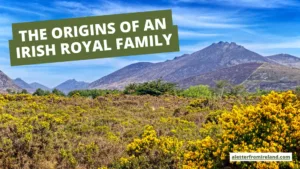

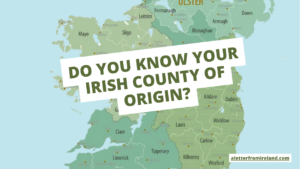
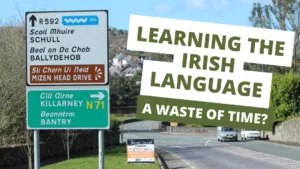
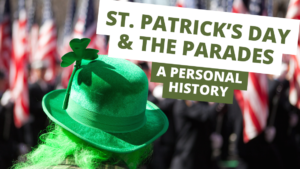
Only Plus Members can comment - Join Now
If you already have an account sign in here.